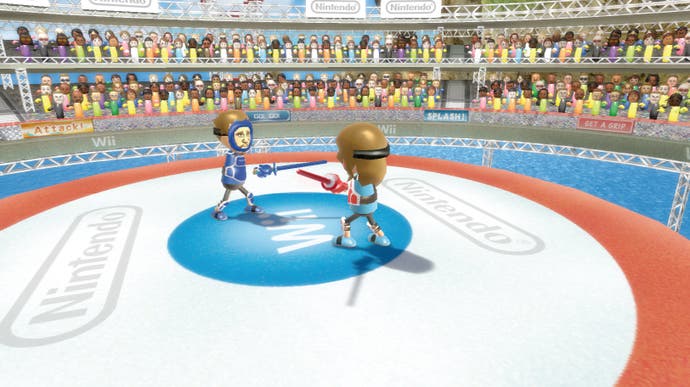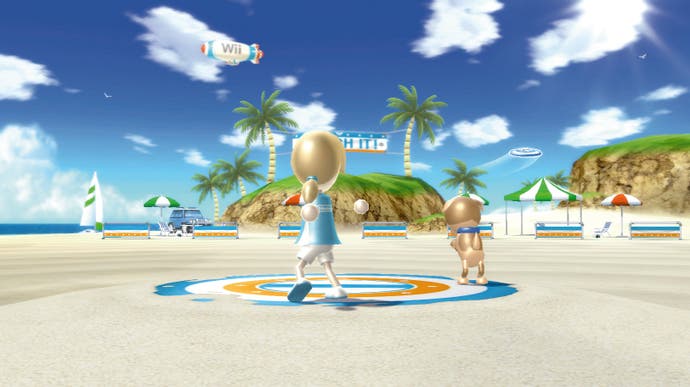Wii Sports Resort vs. Wii MotionPlus
You wanted to know exactly how it works...
Editor's Grovelling Introduction: With Wii Sports Resort due out this coming Friday, many of you have made it clear that you felt our review should have spent more time describing the specific way that the Wii MotionPlus is put to use. Our reviewer, Christian Donlan, did what I asked him to do, so don't blame him - I should have realised that rating the first Nintendo game made for the Wii MotionPlus, of all things, called for more precision. Eurogamer exists to serve you, so I asked Christian to write a supplementary piece that reports on each event's MotionPlus implementation individually to give the review more context.
Swordplay
Duel introduces the basics: knock your opponent off a circular platform suspended over some water, and do it by bonking them over the head with your sword a few times. Swinging the remote launches attacks, while holding B allows you to adopt a defensive stance. The main MotionPlus difference is just how closely your swings are mirrored, allowing you to exploit the tiniest openings for precise attacks, and block from any angle.
It's not direct 1:1, but the slight skittishness seen in the original Wii Sports baseball is entirely absent. Speed Slice sees you racing against an opponent to chop up a selection of items dumped in front of you, ranging from watermelons - that perennial physics demo favourite - to wooden logs, giant cupcakes and diamonds, the hook being that you have to slice each object in the direction shown by the on-screen arrow. Speed Slice is a foregrounding of MotionPlus's enhanced movement-mirroring accuracy, in other words, but it's also a lot of WarioWare-flavoured fun.

One of my favourites in single-player, Showdown sees you fighting your way through hordes of one-hit swordsmen across a variety of WuHu Island locations, without taking more than three strikes yourself. There's a combo system for unbroken chains of knockdowns, making for a very replayable experience. The only problem is that, in the middle of a frenzied attack, the MotionPlus can occasionally lose its bearings, reversing your movements until you've paused the game to recalibrate.
Wakeboarding
Hold the remote at both ends, in the universally acknowledged steering position, and prepare to be dragged around behind a boat. The object is to chain tricks together by getting air from crossing through the wake, and then shaking the remote to perform moves. Anybody who's familiar with a very similar control scheme in Shaun White Snowboarding will immediately appreciate the increased accuracy of MotionPlus at simply registering sudden movements. However, the camera can be slightly sluggish to follow you across the sea, and the automatic nature of the tricks means the experience is a little shallow.
Frisbee
Frisbee Dog is not as inhumane as it sounds - the hound's simply there to return your platter. After choosing between automatic and manual styles (manual puts you in charge of releasing the Frisbee by pressing B), you swing the remote in an arc to loft your Frisbee across the sands, aiming to get as close to the target area as possible. It's not impossible to imagine Frisbee working fairly well without MotionPlus, the main difference presumably lying with the degree to which the tilt of the controller effects the curving. The Frisbee also returns for Frisbee Golf, which offers a range of disks for different distances. Gauging the power of your throw can initially be rather difficult, but at least you can often now skip across the surface of water hazards.

Archery
The remote is the bow, the nunchuk is the string, and Z fires an arrow. As the difficulty increases, wind and distance become factors, and, eventually, targets move around and are blocked by obstacles. The remote may spend most of the time pointing at the ceiling, but thanks to MotionPlus precision games like this are now rendered smooth and responsive, whereas previously they could be rather juddery.


